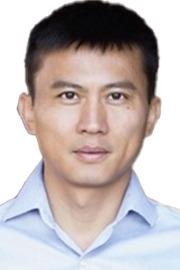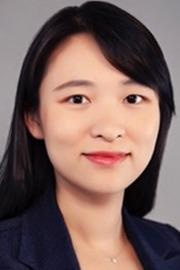AZoM speaks to Professor Yi Cui and Dr. Fang Liu from Stanford University / SLAC National Accelerator Laboratory about their groundbreaking research into lithium batteries. The researchers have found a way to revitalize 'dead' lithium in batteries and hope that their work will make way for extended battery life and less battery wastage.
How did you begin your research into lithium batteries?
Energy storage will play a remarkable role in hurdling global climate change. Currently, there is an increasing demand for high-energy-density batteries, especially for the electrification of transport. Lithium-metal batteries can potentially double or even triple the energy density of current lithium-ion batteries, but the problem associated with lithium-metal batteries is their fast capacity decay and short cycle life. We aim to recover the lost capacity to extend its lifespan.
What happens to the lithium inside batteries when they are no longer usable?
The battery capacity is lost due to the formation of unreactive metallic Li and the side-reactions between Li and electrolyte. Our work focuses on the recovery of isolated Li before it became completely electrochemically unreactive.
How can this ‘dead’ lithium be revitalized in rechargeable batteries?
Over the last 20 years, the research community has formed the consensus that isolated Li filaments/particles are not electrochemically active, and that is why they are also referred to as “dead” Li.
In our study, we found that the isolated Li filaments are highly responsive to the electric field in the electrolyte and have spatial movement toward positive/negative electrodes during battery operations. Based on this new understanding, we developed a new charging protocol to promote the growth of isolated Li toward Li electrode to re-establish the electrical connection. That is how to recover this ‘dead’ lithium in lithium-metal batteries.
How could this innovative process revolutionize electric vehicles and next-generation electronic devices?
This study provides a new perspective of recovering the lost capacity in batteries to extend their lifespan. Although lithium-metal batteries are not mature for the market yet, it is the most promising candidate for next-generation high-energy-density batteries for electric vehicles and portable electronic devices. Meanwhile, the formation of isolated Li also occurs in the existing widely used lithium-ion batteries, especially during fast charging. We are currently developing charging protocols to enable fast charging, which can be readily adopted in electric vehicles and next-generation electronic devices.
Isolated lithium is usually seen in a negative light. How could your study help renew our thinking towards the material?
This surprising discovery reshaped our understanding of the working mechanisms of Li-metal batteries. The dynamics of isolated Li may have contributed to the battery capacities during battery operations without our awareness.
How could your research help us to make use of ‘unusable’ batteries and decrease wastage?
This work focuses on recovering isolated Li during battery operation to extend battery lifespan. In the meantime, it opens opportunities to recover the lost capacities in used batteries. There are still many challenges due to the extensive side-reactions between Li and electrolyte in used or even “unusable” batteries, and we are actively investigating this problem as well.

Image Credit: Roman Zaiets/Shutterstock.com
Is there a potential for this technology to be adopted throughout the world? What are the challenges that may be faced and how could these be overcome?
The dynamic behavior of electrochemically active materials in batteries can be universal in many battery systems, such as sodium-metal batteries, zinc-metal batteries, and aluminum-metal batteries. To apply this understanding to other systems, we need to identify the source of capacity loss in each system and under different testing conditions. Besides, the specific conditions for capacity recovery can be different among various battery systems.
How was it possible to track what happens inside a battery during your study? What key findings came out of this analysis?
We designed a new electrochemical cell for operando study, which allows us to track the real behaviors of isolated Li island with minimum interference from the working electrodes. We observed that isolated Li island exhibit dynamic responses to battery operations and that drove us to investigate their behaviors under real battery configurations.
How will your findings make way for more robust lithium-metal batteries and why is this development important?
As demonstrated in our work, the recovery of isolated Li can dramatically extend the lifespan of lithium-metal batteries and push them closer to practical applications with better safety. This study also provides insights into the working mechanism of a lithium anode, which will inspire the better design of robust lithium-metal batteries.
What are the next steps for the project?
Based on this discovery, we are developing protocols to enable fast charging in lithium-ion batteries, which is extremely important for electric vehicles and portable electronics.
Where can readers find more information?
Link to the paper: https://www.nature.com/articles/s41586-021-04168-w
Link to profile:
Link to Google Scholar:
About Professor Yi Cui and Dr. Fang Liu
 Professor Yi Cui is the director of the Precourt Institute for Energy, co-director of the StorageX Initiative, Fortinet Founders Professor of Engineering in the Department of Materials Science and Engineering, and of photon science at SLAC National Accelerator Laboratory. He earned his bachelor’s degree in Chemistry in 1998 from the University of Science & Technology of China, and his Ph.D. in Chemistry from Harvard University in 2002. Cui was a Miller Postdoctoral Fellow at the University of California, Berkeley, from 2002 to 2005, before joining the Stanford faculty.
Professor Yi Cui is the director of the Precourt Institute for Energy, co-director of the StorageX Initiative, Fortinet Founders Professor of Engineering in the Department of Materials Science and Engineering, and of photon science at SLAC National Accelerator Laboratory. He earned his bachelor’s degree in Chemistry in 1998 from the University of Science & Technology of China, and his Ph.D. in Chemistry from Harvard University in 2002. Cui was a Miller Postdoctoral Fellow at the University of California, Berkeley, from 2002 to 2005, before joining the Stanford faculty.
As a preeminent researcher of nanotechnologies for better batteries and other sustainable technologies, Cui has published more than 500 studies and is one of the world’s most cited scientists. He is an elected fellow of the American Association for the Advancement of Science, the Materials Research Society, the Electrochemical Society, and the Royal Society of Chemistry. He is an executive editor of Nano Letters and co-director of the Battery 500 Consortium.
He has founded five companies to commercialize technologies from his lab: Amprius Inc., 4C Air Inc., EEnotech Inc., EnerVenue Inc, and LifeLabs Design Inc. Cui’s honors include Global Energy Prize (2021), Department of Energy Lawrence Award (2021), Materials Research Society Medal (2020), and Blavatnik National Laureate (2017).
 Dr. Fang Liu is currently a postdoc research fellow at Stanford, working with Prof. Yi Cui. She received her Ph.D. degree in Chemical Engineering from the University of California, Los Angeles. She has been recognized with several honors and awards, including the Electrochemical Society (ECS) Young Investigator Lecture Series in SF section, Women Chemist Committee Postdoc Series at the University of Illinois at Urbana-Champaign, ARCO Fellowship, UCLA Dissertation Year Fellowship, and Graduate Division Fellowship. She is the lead organizer of the broader impact symposium “Women in Materials Science” at Materials Research Society Fall Meeting (2021) and an active member of the Stanford Allies for Women in Science and Engineering (WISE) Group.
Dr. Fang Liu is currently a postdoc research fellow at Stanford, working with Prof. Yi Cui. She received her Ph.D. degree in Chemical Engineering from the University of California, Los Angeles. She has been recognized with several honors and awards, including the Electrochemical Society (ECS) Young Investigator Lecture Series in SF section, Women Chemist Committee Postdoc Series at the University of Illinois at Urbana-Champaign, ARCO Fellowship, UCLA Dissertation Year Fellowship, and Graduate Division Fellowship. She is the lead organizer of the broader impact symposium “Women in Materials Science” at Materials Research Society Fall Meeting (2021) and an active member of the Stanford Allies for Women in Science and Engineering (WISE) Group.
Disclaimer: The views expressed here are those of the interviewee and do not necessarily represent the views of AZoM.com Limited (T/A) AZoNetwork, the owner and operator of this website. This disclaimer forms part of the Terms and Conditions of use of this website.